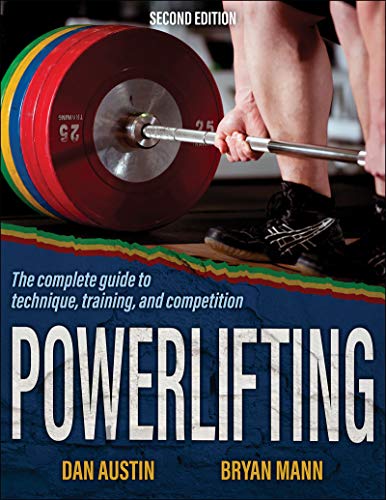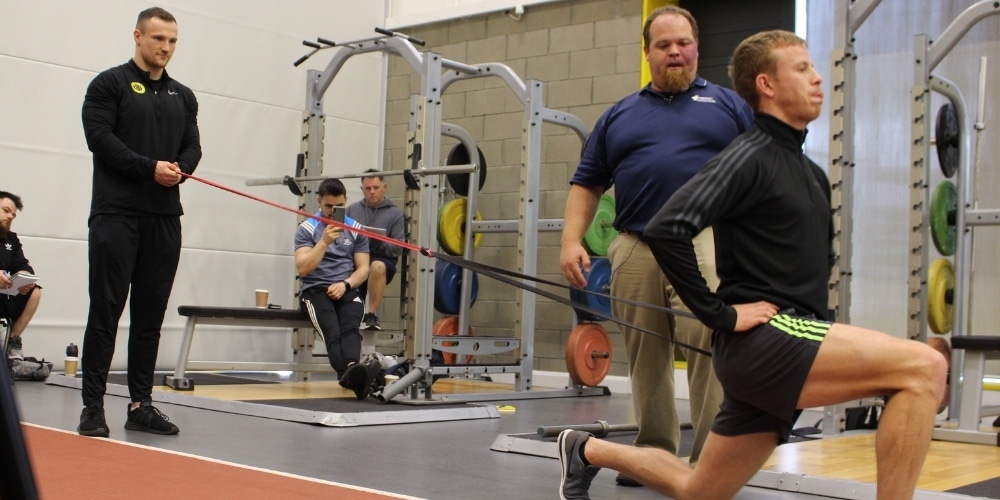5 de July de 2021
Who is Bryan Mann, the creator of velocity-based training?
Velocity-based training has become a revolution in recent decades. From the hands of sports science researchers such as Bryan Mann, but also González Badillo, Cronin, Jonathon Weakley, Langfort, Banyard… and a multitude of authors and studies that have endowed velocity-based training, a proven validity and efficacy that greatly outperforms other previous training models such as the 1 RM.
The latest research has come to shed much light on training models that make gym and strength work one of the most exciting fields of study in order to become as efficient as possible. Obtain the best results in the shortest possible time and with the least fatigue to project maximum sports performance. But, is Bryan Mann the creator and forerunner of velocity-based training?
In answer to this question, we could assure you that he is not. For example González Badillo in his book “Weightlifting” (1) left us a unique phrase while studying and training the Spanish weightlifting team. In this particular book he focuses on concretizing the scientific bases of periodization and intensity modulation.
“If we could measure the maximum velocity of the lifts every day and with immediate information, this would probably be the best reference point to know if the weight is adequate or not.”
Between 1993 and 1996 we can find a series of research articles focused on the velocity of execution but it is not yet called “Velocity-based training” as we know it today. As a good example we have a study (2) that observed the effects of different intensities (both concentric and isometric) and the relationship with the loss of power, strength and velocity. Also in 1996 (3) the relationship that the velocity of a quadriceps extension could have during the rehabilitation process, especially for the knee, was observed. Another study that we should highlight from these years (4) is that of doctors Behm and Sale comparing the results of training at a normal velocity and an intentional maximum.
However, in the last decade of research on velocity-based training Bryan Mann has become one of the most recognized figures.
Who is Bryan Mann?
Bryan Mann is an established researcher in sports science since its inception in 1999. Working both as a researcher and educator at many universities such as the University of Missouri and the University of Miami as a professor in Kinesiology. He also highlights visits at other universities such as the University of Tulsa and Arizona State University.

What books and research has he been a part of?
Apart from being the author of several key books on weight training with various Powerlifting guides and several web articles, Bryan Mann’s work stands out mainly in the field of research. One of his most interesting and most cited articles (5) “Velocity Based Training in American Football” resulting in the clear superiority of VBT to produce the best results at the strength and power level. Also one of his best known books is “Powerlifting”, written with Dan Austin, which is projected as a complete guide to both technique, training and competition in the sport of Powerlifting.

We can also find a series of very interesting research relating load and velocity in Back Squat and Bench Press movements (6,7). Regarding this research, it should be noted that the results support that men tend to move the bar faster compared to the relative load.
One last piece of research that we would like to highlight is the recent publication “Velocity-Based Training: From Theory to Application.” (8) What in Spanish would be “Entrenamiento Basado en Velocidad: De la Teoría a la Práctica.” We could consider it a brief general guide of the most important aspects in relation to velocitys, intensity and movements of the training based on velocity. A well-founded discussion that exposes one of the best methods to unify both the VBT and more traditional training models.

Although Bryan Mann has helped to research and unify criteria around #VBT (velocity-based training) and will surely continue to provide value in the future. The origin of VBT (velocity-based training) research is not at all clear, although research on this is very interesting to understand the origins and future of this methodology.
References
- González-Badillo, J. J. (1991). Halterofilia. Comité Olímpico Español.
- Hideki Toji, Kensaku Suei, and Masahiro Kaneko. Effects of Combined Training Loads on Relations Among Force, Velocity, and Power Development. Canadian Journal of Applied Physiology. 22(4): 328-336. https://doi.org/10.1139/h97-021
- Behm, D. G., & Sale, D. G. (1993). Intended rather than actual movement velocity determines velocity-specific training response. Journal of Applied Physiology, 74(1), 359-368.
- Aagaard, P., Simonsen, E. B., Trolle, M., Bangsbo, J., & Klausen, K. (1996). Specificity of training velocity and training load on gains in isokinetic knee joint strength. Acta Physiologica Scandinavica, 156(2), 123-129.
- Mann, J. B., Ivey, P. A., & Sayers, S. P. (2015). Velocity-based training in football. Strength & Conditioning Journal, 37(6), 52-57.
- Stahl, C. A., Lopes dos Santos, M., Lawson, D., Lindsay, K. G., Trammel, W., Townsend, R., … & Dawes, J. J. (2021). COMPARISON OF THE LOAD-VELOCITY RELATIONSHIP DURING BACK SQUAT IN RESISTANCE TRAINED MEN AND WOMEN. In International Journal of Exercise Science: Conference Proceedings (Vol. 11, No. 8, p. 43).
- Stahl, C. A., Lopes dos Santos, M., Lawson, D., Lindsay, K. G., Trammel, W., Townsend, R., … & Dawes, J. J. (2021). COMPARISON OF THE LOAD-VELOCITY RELATIONSHIP DURING BENCH PRESS IN RESISTANCE TRAINED MEN AND WOMEN. In International Journal of Exercise Science: Conference Proceedings (Vol. 11, No. 8, p. 44).
- Weakley, J., Mann, B., Banyard, H., McLaren, S., Scott, T., & Garcia-Ramos, A. (2021). Velocity-based training: From theory to application. Strength & Conditioning Journal, 43(2), 31-49.

